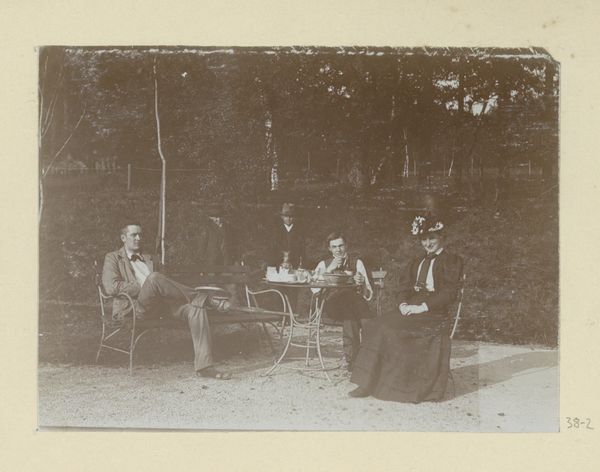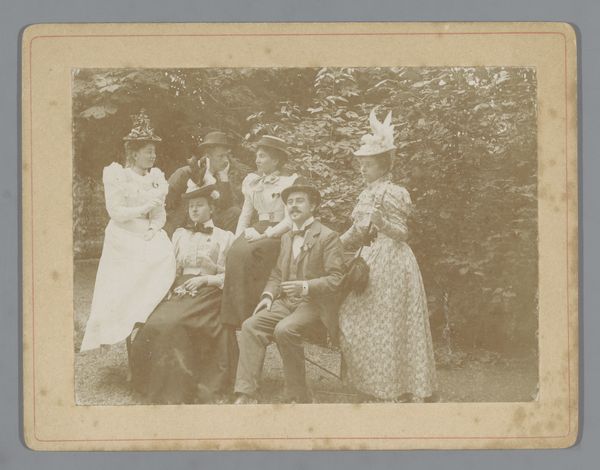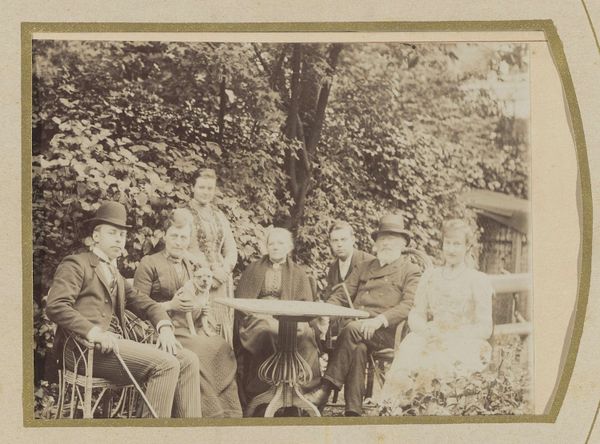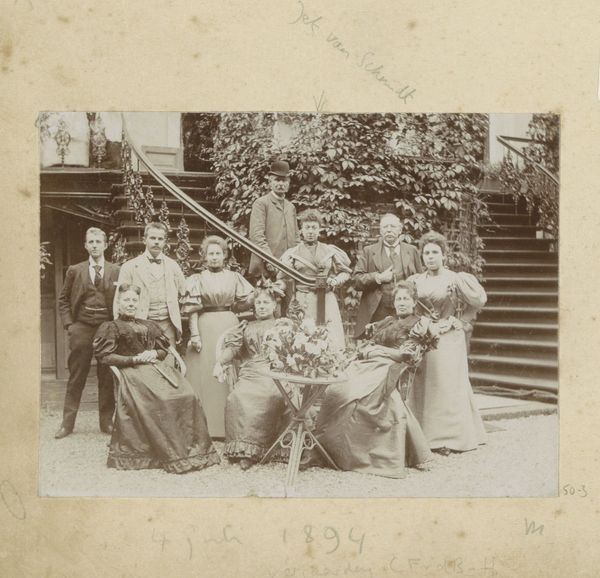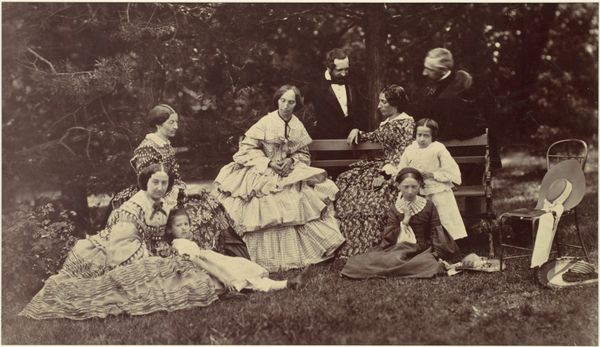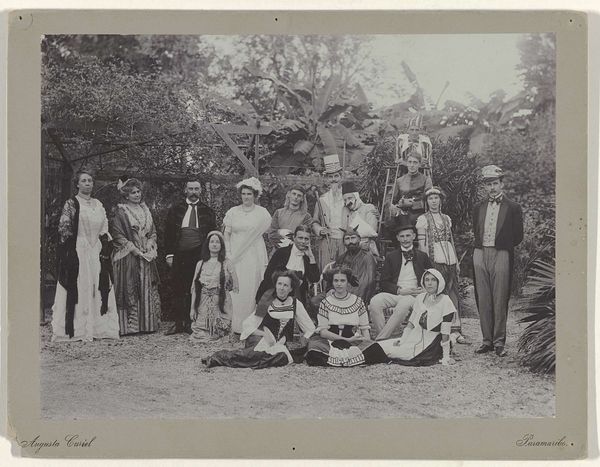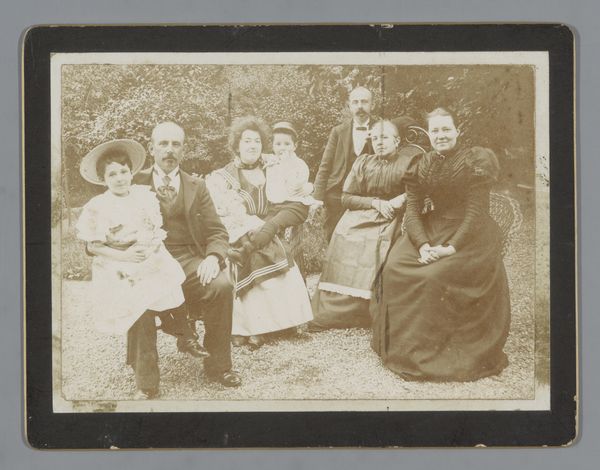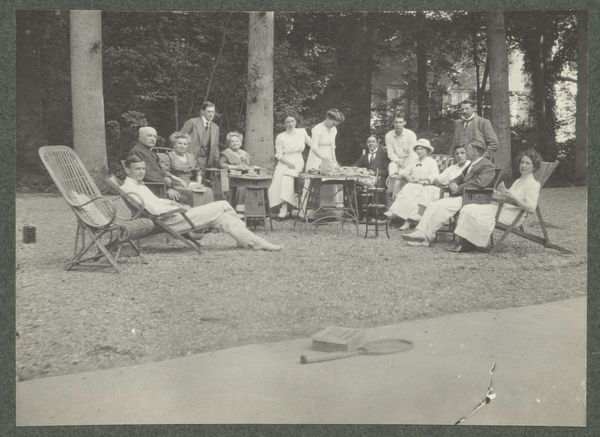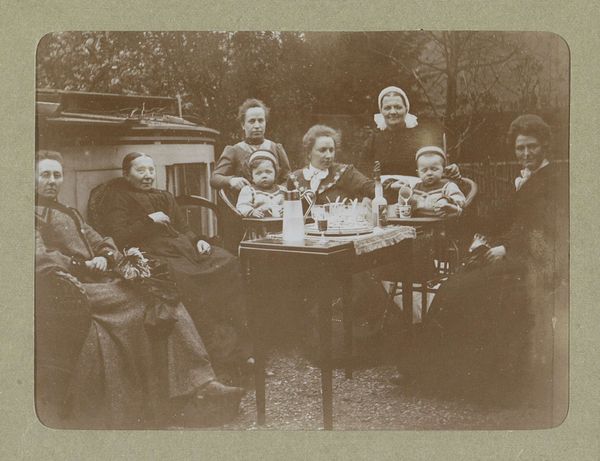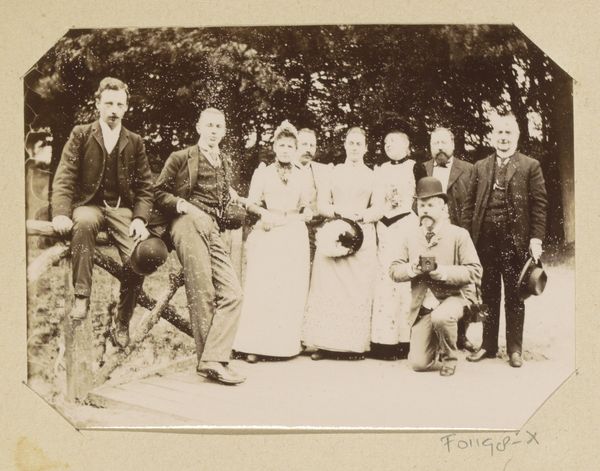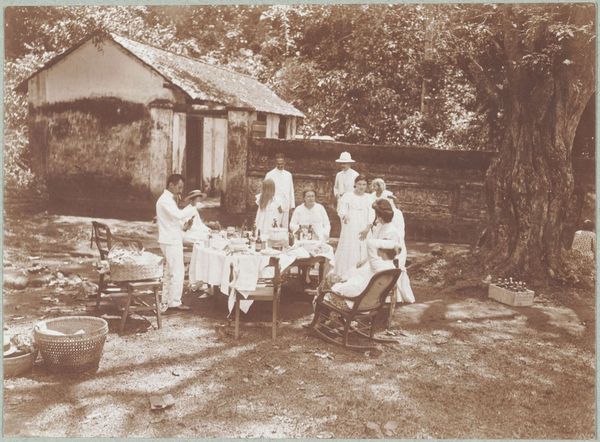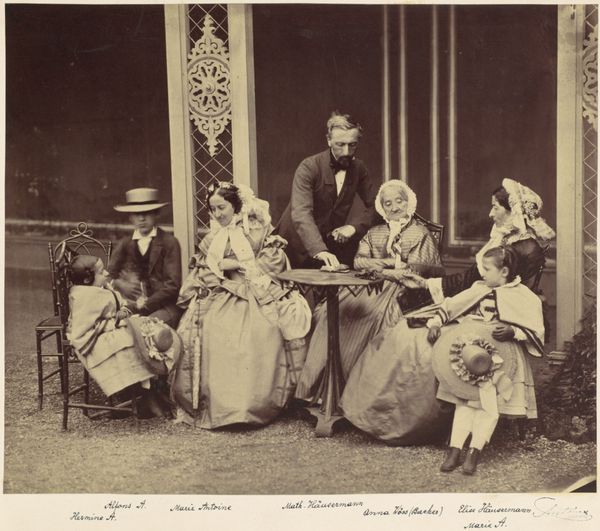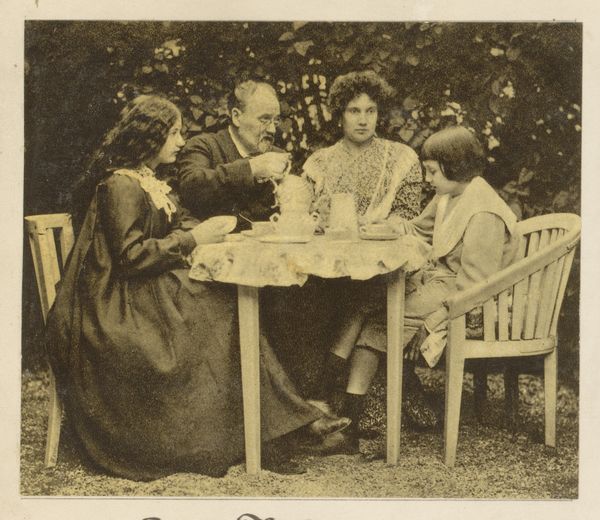
Groepsportret van de familie Pauw van Wieldrecht aan een tafel 1901 - 1907
0:00
0:00
photography, gelatin-silver-print
#
portrait
#
print photography
#
landscape
#
archive photography
#
photography
#
historical photography
#
intimism
#
group-portraits
#
gelatin-silver-print
#
academic-art
#
realism
Dimensions: height 169 mm, width 227 mm, height 200 mm, width 270 mm
Copyright: Rijks Museum: Open Domain
Curator: The sepia tones and the carefully arranged composition lend an air of studied tranquility. The scale is surprisingly intimate for a group portrait. Editor: This is a gelatin silver print entitled "Groepsportret van de familie Pauw van Wieldrecht aan een tafel," dating from 1901 to 1907. The processes involved, from the darkroom chemistry to the choices about paper stock, create meaning in how the family is trying to record its status and domestic lives. Curator: I'm intrigued by the visual relationships between the figures—the way their poses and gazes create subtle narratives of connection and distance. The light gently models each face, lending a certain grace, in all senses, to each member. Editor: Precisely. Think about the labor involved: setting up the backdrop, dressing the family, the photographer's work in the darkroom. These prints weren't mass-produced initially, making the finished product valuable. Family portraits become tools for building specific historical accounts. The materiality is essential. Curator: Note how the artist plays with shape, echoing and contrasting forms, hats and chairs, with careful balance, distributing objects to build our eye contact across the visual space. Editor: Let’s also reflect on the act of consumption here: What kind of relationship do we have with these kinds of images? Consider this photographic artwork in light of photographic development. Are we admiring a historical record, or are we actively creating a collective social image? The rise of affordable photography democratized the medium but also cemented norms around photographic portraiture of this kind. Curator: These families presented ideal selves, but still reflect very clearly about historical contexts and trends in social relations and composition conventions. A moment captured, revealing so much with just careful observation of tonal range, pattern and composition. Editor: Ultimately, it’s about how materiality shapes culture, how a carefully posed image, mass produced and widely consumed, became deeply entangled with class and privilege at the turn of the twentieth century.
Comments
No comments
Be the first to comment and join the conversation on the ultimate creative platform.
